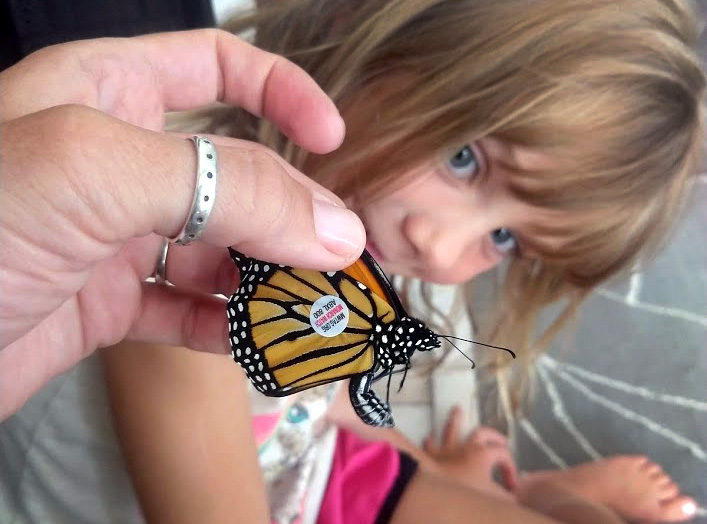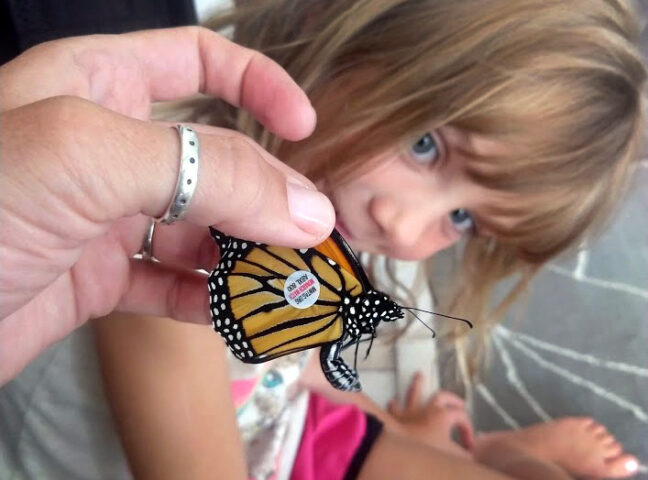Story by Melissa Kivel
While I’ve always had a love for nature, I didn’t become a huge butterfly nerd until the world as I knew it shut down due to Covid.
As a mother of three young children desperate for any activities that didn’t involve a screen or staying home for countless more weeks, I dove into the world of Monarchs. My children and I went to parks and fields, scouting for milkweed shoots and delicately lifting leaves in hopes of catching a glimpse of a small, pearlescent egg. We transplanted young milkweed shoots from places that would eventually be mowed and into our garden beds, successfully starting three milkweed patches of our own.
That was all it took to create our very own living laboratory. Once the milkweed took foot in our garden, monarchs would visit daily and with them came a cycle of eggs, flashy caterpillars, and just the type of truly engaging learning environment I was craving for my children. They checked our milkweed patches daily, noting if there were any new eggs, observing size of caterpillars, and occasionally naming each one (Shout out to Yellowy, wherever he may be). We learned to let the caterpillars grow outside exposed to the elements where they can get used to Michigan’s sometimes harsh weather. When the caterpillars grew big and plump, we gently placed them in an enclosure and wait for the magic of metamorphosis to happen within a day or two. We’ve been fortunate enough to witness our caterpillar friends wriggle out of the last skin, revealing the bright green and gold of the chrysalis underneath which never ceases to amaze me.
After impatiently waiting for roughly two weeks, I’d hear one of the kids excitedly comment on how the chrysalis was changing color and beginning to show the trademark black and orange marks of an adult monarch butterfly. We’d hold our breath and watch as the adult carefully emerged from its now transparent chrysalis, expand its wings, and knit its proboscis together. Once the wings were fully expanded and ready for flight, we released our little friend back into the wild to continue the cycle. It has been a fascinating learning journey for my family and one I hope to share with other people looking to get connected with nature around them.

Our journey continues. We’ve recently started tagging our flying friends before releasing them into the wild with small stickers from MonarchWatch, a research program based in Kansas University. The stickers are small and light and marked with a unique code that can be easily read by the next lucky person to come across that butterfly, whether it be in Michigan, Texas, or an overwintering site in Mexico. Citizen scientist all over North America are working together to conserve Monarch butterflies for generations to come, and I’m proud to say that my family is part of that community.
So, thank you, Monarch Butterflies, not only for curing one family’s boredom during the pandemic, but for continuing to fascinate people of all ages time and time again!


1 Comment
What an exciting experience for the kiddies. I remember doing this when I was young with a quart jar and sitting them on our window sill in the bedroom.